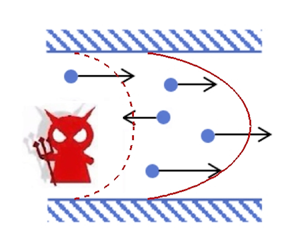Crossref Citations
This article has been cited by the following publications. This list is generated based on data provided by
Crossref.
Liu, W.
Liu, Y. Y.
Yang, L. M.
Liu, Z. J.
Yuan, Z. Y.
Shu, C.
and
Teo, C. J.
2021.
Coupling improved discrete velocity method and G13-based gas kinetic flux solver: A hybrid method and its application for non-equilibrium flows.
Physics of Fluids,
Vol. 33,
Issue. 9,
Su, Wei
Li, Qi
Zhang, Yonghao
and
Wu, Lei
2022.
Temperature jump and Knudsen layer in rarefied molecular gas.
Physics of Fluids,
Vol. 34,
Issue. 3,
Singh, S.
Karchani, A.
Chourushi, T.
and
Myong, R.S.
2022.
A three-dimensional modal discontinuous Galerkin method for the second-order Boltzmann-Curtiss-based constitutive model of rarefied and microscale gas flows.
Journal of Computational Physics,
Vol. 457,
Issue. ,
p.
111052.
Wu, Lei
2022.
Rarefied Gas Dynamics.
p.
127.
Du, Yaowen
Sun, Surong
Tan, Meijing
Huang, Heji
Yan, Cong
Meng, Xian
Chen, Xuan
and
Wang, Haixing
2023.
Numerical study on the non-equilibrium characteristics of high-speed atmospheric re-entry flow and radiation of aircraft based on fully coupled model.
Journal of Fluid Mechanics,
Vol. 977,
Issue. ,
Pan, Dongxin
Zhuo, Congshan
Liu, Sha
and
Zhong, Chengwen
2023.
Multi-degree-of-freedom kinetic model and its applications in simulation of three-dimensional nonequilibrium flows.
Computers & Fluids,
Vol. 265,
Issue. ,
p.
106020.
Zeng, Jianan
Yuan, Ruifeng
Zhang, Yanbing
Li, Qi
and
Wu, Lei
2023.
General synthetic iterative scheme for polyatomic rarefied gas flows.
Computers & Fluids,
Vol. 265,
Issue. ,
p.
105998.
Pan, Dongxin
Zhang, Rui
Zhuo, Congshan
Liu, Sha
and
Zhong, Chengwen
2023.
A multi-degree-of-freedom gas kinetic multi-prediction implicit scheme.
Journal of Computational Physics,
Vol. 475,
Issue. ,
p.
111871.
Li, Shaokang
Su, Wei
and
Zhang, Yonghao
2023.
Sound wave propagation in rarefied molecular gases.
Journal of Fluid Mechanics,
Vol. 973,
Issue. ,
Li, Qi
Zeng, Jianan
Huang, Zemin
and
Wu, Lei
2023.
Kinetic modelling of rarefied gas flows with radiation.
Journal of Fluid Mechanics,
Vol. 965,
Issue. ,
Liu, Wei
Zhang, Yanbing
Zeng, Jianan
and
Wu, Lei
2024.
Further acceleration of multiscale simulation of rarefied gas flow via a generalized boundary treatment.
Journal of Computational Physics,
Vol. 503,
Issue. ,
p.
112830.
Li, Qi
Zeng, Jianan
and
Wu, Lei
2024.
Kinetic modelling of rarefied gas mixtures with disparate mass in strong non-equilibrium flows.
Journal of Fluid Mechanics,
Vol. 1001,
Issue. ,
Zhang, Yanbing
Zeng, Jianan
Yuan, Ruifeng
Liu, Wei
Li, Qi
and
Wu, Lei
2024.
Efficient parallel solver for rarefied gas flow using GSIS.
Computers & Fluids,
Vol. 281,
Issue. ,
p.
106374.
Liu, Hualin
Li, Qi
Chen, Weifang
and
Wu, Lei
2024.
On the shock wave boundary layer interaction in slightly rarefied gas.
Physics of Fluids,
Vol. 36,
Issue. 2,
Du, Yao-Wen
Sun, Su-Rong
Wang, Hai-Xing
Huang, He-Ji
Yan, Cong
Meng, Xian
and
Chen, Xuan
2025.
Thermochemical kinetic model for high altitude and low altitude high-speed flow and radiation prediction based on the State-to-State model.
Physics of Fluids,
Vol. 37,
Issue. 3,
Kim, Sanghun
and
Jun, Eunji
2025.
A stochastic particle method based on the Fokker–Planck Master equation for rarefied gas flows of diatomic mixtures.
Physics of Fluids,
Vol. 37,
Issue. 3,
Tian, Songyan
and
Wu, Lei
2025.
Multiscale modelling and simulation of coexisting turbulent and rarefied gas flows.
Journal of Fluid Mechanics,
Vol. 1002,
Issue. ,




